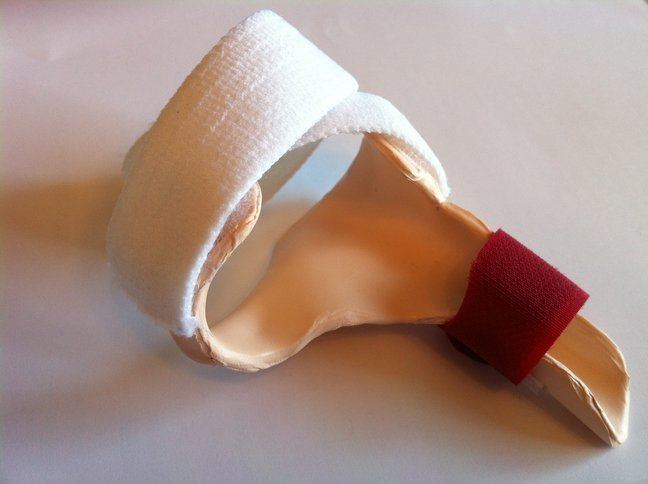Specialty medical genetics ICD-9-CM 755.59 DiseasesDB 30760 | ICD-10 Q68.1 OMIM 114200 | |
 | ||
Camptodactyly is a medical condition that causes one or more fingers to be permanently bent. It involves fixed flexion deformity of the proximal interphalangeal joints. The fifth finger is always affected.
Contents
Camptodactyly can be caused by a genetic disorder. In that case, it is an autosomal dominant trait that is known for its incomplete genetic expressivity. This means that when a person has the genes for it, the condition may appear in both hands, one, or neither. A linkage scan proposed that the chromosomal locus of camptodactyly was 3q11.2-q13.12.
Etymology
The name is derived from the ancient Greek words kamptos (bent) and daktylos (finger).
Causes
The specific cause of camptodactyly remains unknown, but there are a few deficiencies that lead to the condition. A deficient lumbrical muscle controlling the flexion of the fingers, and abnormalities of the flexor and extensor tendons.
A number of congenital syndromes may also cause camptodactyly:
Pattern of inheritance
The pattern of inheritance is determined by the phenotypic expression of a gene—which is called expressivity. Camptodactyly can be passed on through generations in various levels of phenotypic expression, which include both or only one hand. This means that the genetic expressivity is incomplete. It can be inherited from either parent.
In most of its cases, camptodactyly occurs sporadically, but it has been found in several studies that it is inherited as an autosomal dominant condition.
Treatment
If a contracture is less than 30 degrees, it may not interfere with normal functioning. The common treatment is splinting and occupational therapy. Surgery is the last option for most cases as the result may not be satisfactory.
